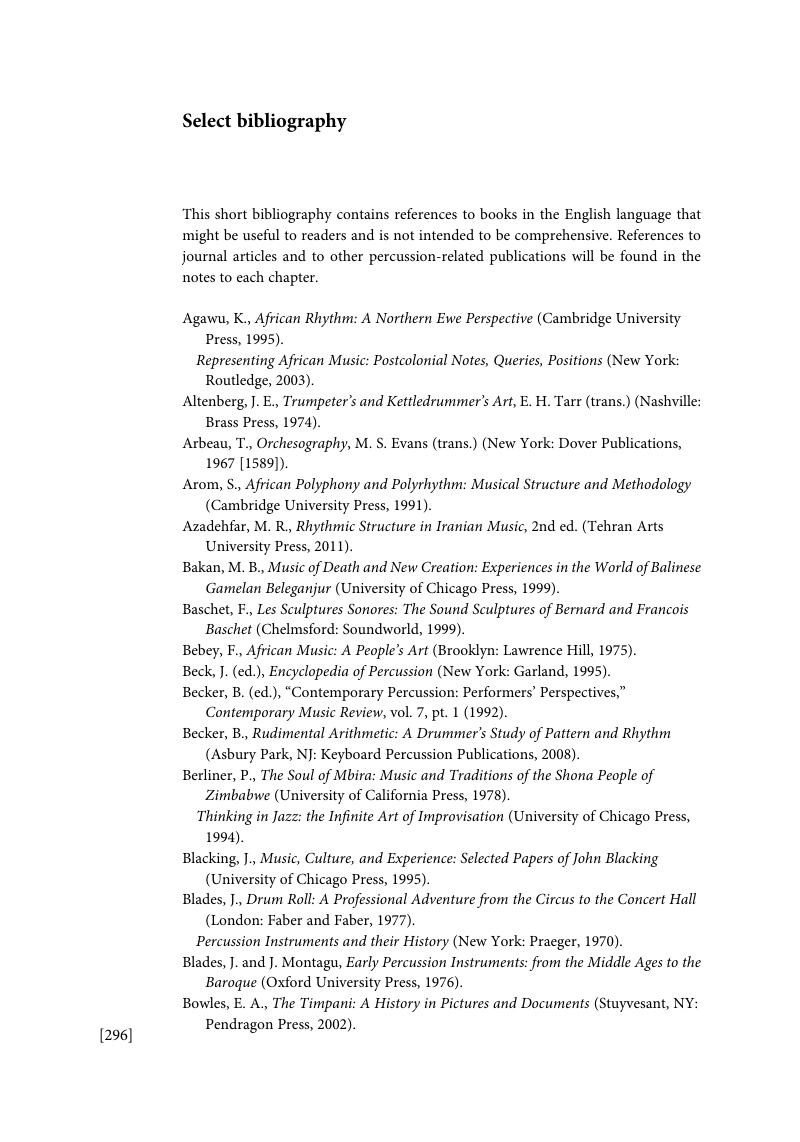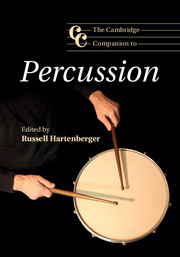Book contents
- The Cambridge Companion to Percussion
- Cambridge Companions to Music
- The Cambridge Companion to Percussion
- Copyright page
- Contents
- Figures
- Music examples
- Contributors
- Book part
- Introduction
- Part One Orchestral percussion
- Part Two The development of percussion instruments
- Part Three Percussion in performance
- Part Four Composing music for percussion instruments
- Part Five Drum sets and drumming
- Part Six World percussion
- Part Seven Percussion and rhythm
- Select bibliography
- Index
- References
Select bibliography
Published online by Cambridge University Press: 05 February 2016
- The Cambridge Companion to Percussion
- Cambridge Companions to Music
- The Cambridge Companion to Percussion
- Copyright page
- Contents
- Figures
- Music examples
- Contributors
- Book part
- Introduction
- Part One Orchestral percussion
- Part Two The development of percussion instruments
- Part Three Percussion in performance
- Part Four Composing music for percussion instruments
- Part Five Drum sets and drumming
- Part Six World percussion
- Part Seven Percussion and rhythm
- Select bibliography
- Index
- References
Summary

- Type
- Chapter
- Information
- The Cambridge Companion to Percussion , pp. 296 - 300Publisher: Cambridge University PressPrint publication year: 2016



